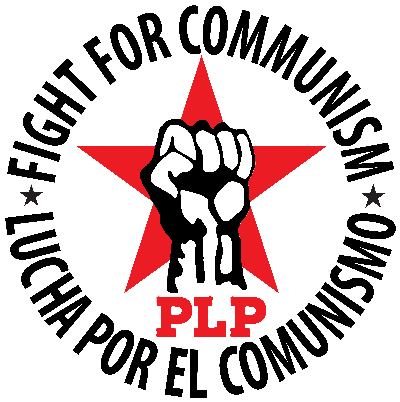The following article was part of a twelve-part series entitled A short history of Progressive Labor Party (PLP) and its activities in Students for a Democratic Society (SDS) first published in CHALLENGE in early 2007.
By the fall of 1967, Students for a Democratic Society (SDS) chapters had sprung up on hundreds of U.S. college campuses. A vigorous debate ensued on the tactics of anti-war activity. Progressive Labor Party (PLP)members advocated the principle that tactics flowed from politics, and that class allegiance held the key to politics.
From the very beginning, PLP stood alone in fighting for a "Worker-Student Alliance." This position had several practical consequences:
* U.S. bosses got their cannon fodder for the Vietnam War through a military draft. However, college students could enjoy a "2-S'' student deferment. PLP argued that a principled anti-war position required refusing this class privilege. PLP'ers rejected it individually and as a mass position. As a result, many PLP members were drafted. The military brass deemed some unfit for military service for "political reasons." Others entered the military and organized against the war on the inside. PLP's principled position against the 2-S deferment won widespread respect throughout the movement, including the grudging admiration of the Party's right-wing opponents within SDS.
* From the start, PLP also vigorously opposed the position of the "official" leadership of the anti-war movement, that "Stop the bombing and negotiate" was the only mass line that could mobilize large numbers of people within the U.S. The Party also argued that this was an imperialist war and not just a “mistake” by some politicians. PLP argued that as an imperialist invader, the U.S. ruling class had no right to negotiate a blade of grass in Vietnam; and that the only viable demand was "U.S. out NOW!" This struggle around this principle—correct as far as it went -- was to have significant consequences several years later when the Vietnamese "communist" leadership began negotiations with the Nixon administration.
* During the late 1960s, spontaneous working-class militancy was mushrooming, with industrial strikes, inner-city uprisings, and rebellion within the imperialist military. PLP took the lead in arguing that students should support these struggles, particularly with concrete action.
* PLP organized summer "Work-in" projects in 1967, '68, and '69, with two main goals: first to educate anti-war students about the true nature of the working class and the need to unite with workers; second, to bring anti-war, anti-imperialist politics to the working class. In a limited way, the "Work-ins" were quite successful. The student participants shed many reactionary illusions about workers, not the least of which was the boss-promoted slander that workers were racist, reactionary "oafs" incapable of understanding their class interests. Workers who met Work-in participants saw the potential for uniting with anti-war students and communists. The bosses went nuts, releasing several official documents revealing their panic at the prospect of workers and students uniting massively to oppose the war. PLP argued that this panic alone indicated we were on the right track.
* Within SDS, an increasingly sharp debate began to emerge around this issue. PLP argued for unity with workers in industry, transportation, and communications, and to concretize this unity by supporting strikes in auto, other heavy industries, telephone (the computer was still two decades away as a mass item), hospitals, etc. SDS's "right-wing" (as we called it) opposed this position, arguing that the "traditional" working class had become obsolete, that it was hopelessly reactionary, and that "the real hope for revolution" lay in the "new working class" of alienated intellectuals and professionals. The main spokesperson for this nonsense was Herbert Marcuse, a former German social democrat who had emigrated to the U.S. and became a professor in California. The bosses happily anointed him the ideologue of the "New Left." They promoted his ideas and his book One-Dimensional Man, even featuring him on the cover of Time Magazine. PLP continued to fight for the Worker-Student Alliance and to organize militant action that reflected the class position that the working class could never become obsolete as long as capitalism spirals into crisis, degrading the labor conditions for workers and pushing more segments of our class into more precarious jobs.
Throughout the war, the Progressive Labor Party, which had launched the first mass demonstration against the war in 1964, played a crucial ideological, political, and practical role within SDS and the anti-war movement in general. PLP gained experience, advanced its political line, and recruited large numbers of students and others to its ranks. Many remain Party members and leaders nearly four decades later. Many PL’ers who were recruited in the '60s and '70s recently led a forum called the Lessons from 1968 and beyond. Look out for the article in the next issue of CHALLENGE.

